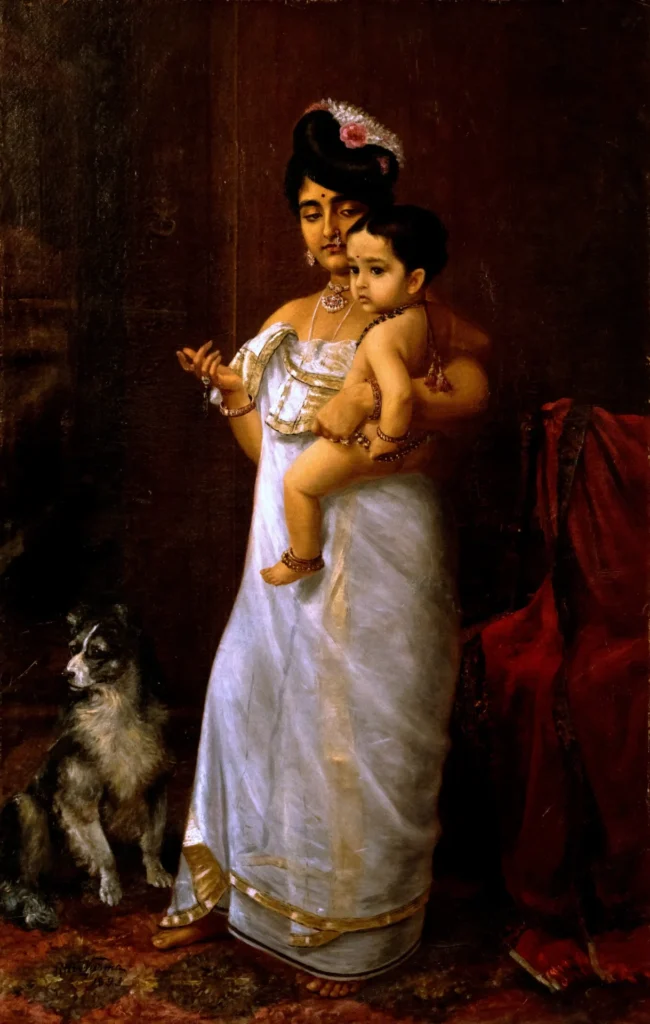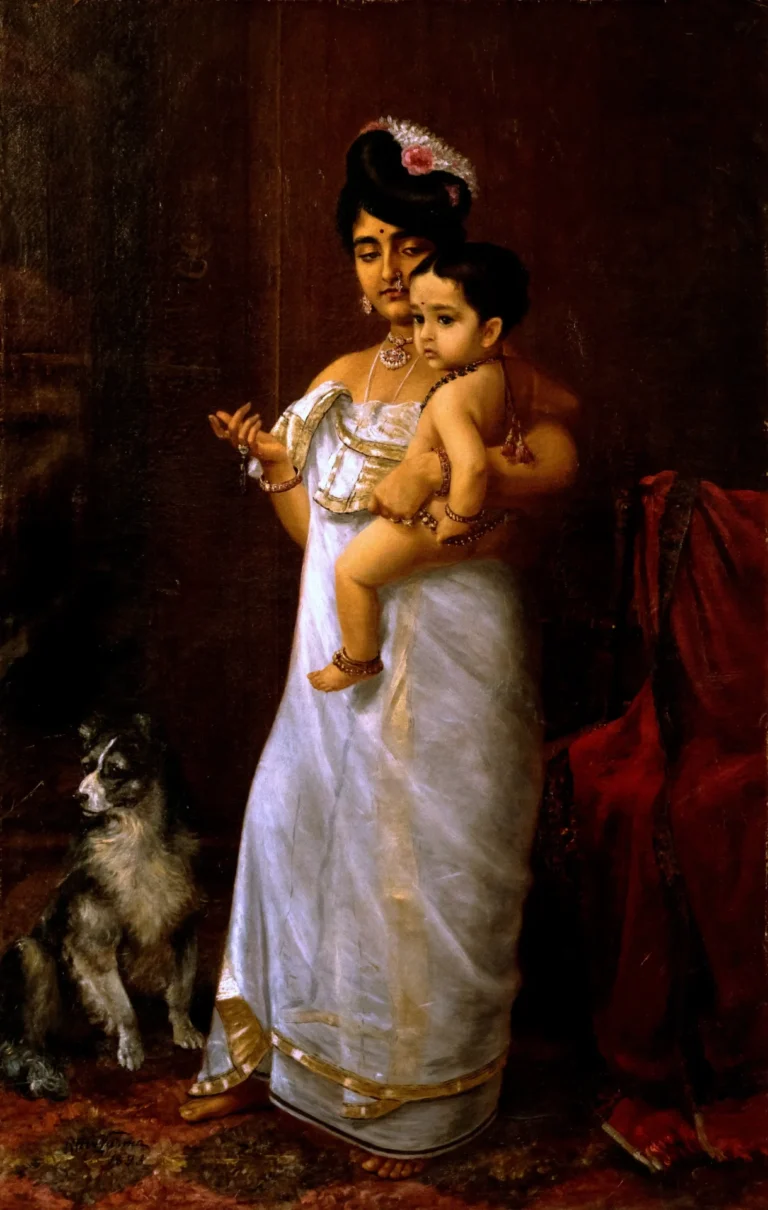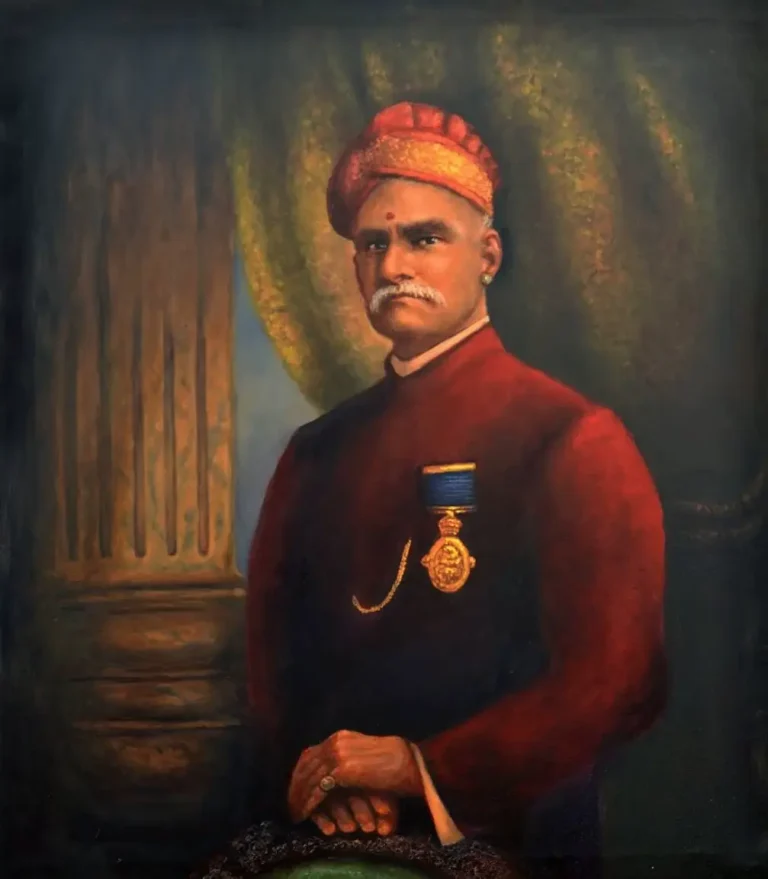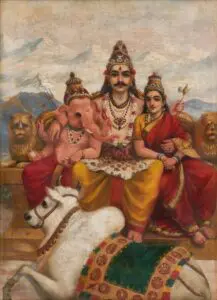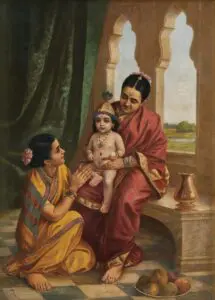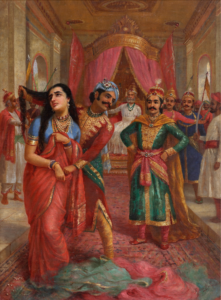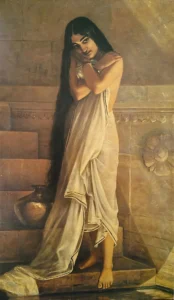There Comes Papa 1893
There Comes Papa portrays Mahaprabha Thampuratti, Raja Ravi Varma's daughter, cradling her one-year-old son Marthanda Varma in a poignant moment of anticipation. Accompanied by their pet dog, the painting embodies domestic ideals while intertwining European artistic techniques with Indian themes. The scene not only reflects the early transitions in Nair society but also demonstrates Varma's pioneering role in modernizing Indian art—a work that speaks volumes about familial and social dynamics in the late 19th century.
1893
About the Artwork
Created in 1893, There Comes Papa offers a glimpse into familial relationships shaped by the Nair matrilineal system. The absence of the father figure invokes new meanings of emotional connection in a traditional context. Varma, who adeptly fused Indian subjects with European techniques, presented this painting as part of a broader narrative reflecting cultural evolution. Its display at the World's Columbian Exposition positioned it in an ethnographic context, questioning the boundaries of art versus cultural representation, while also showcasing Varma's notable achievements and recognition as an artist.
Subjects and Models
The painting features Raja Ravi Varma's daughter, Mahaprabha Thampuratti, holding her one-year-old son, Marthanda Varma. A pet dog is also included in the scene, looking out along with the mother and child, anticipating the arrival of the fatherTechnique and Style
Varma employed techniques from European art to represent Indian ideals of domesticity and femininity. The painting showcases his use of naturalism, shading, and lighting, which were well-regarded by his contemporaries. However, the naturalism in his work was later criticized in the early 20th century for being a Western influenceCultural and Social Significance
The painting reflects a blend of Indian and European artistic styles. The inclusion of a dog, which was considered unclean in Indian culture at the time, was suggested to appeal to American viewers and reflects European domestic ideals. The scene also carries significance in the context of the Nair matrilineal system, where the absent but approaching father symbolizes a shift towards nuclear family structuresDid You Know
Raja Ravi Varma received two certificates of merit at the World’s Columbian Exposition, reflecting the significant appreciation for his work in an international context.
The painting symbolizes a blend of Indian and European artistic styles, showcasing Varma’s innovative approach that captured modern domestic ideals while still resonating with traditional Indian themes.
The inclusion of the pet dog in There Comes Papa adds a layer of depth to the painting, as dogs were regarded as unclean in Indian culture at the time, representing a shift towards more Western domestic values.




